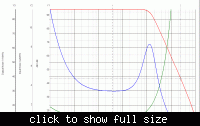frilance
Member level 1
Hi everybodoy,
I've got a doubt concerning the use of noise simulation in LTSpice. As far as I know, the input current noise density (inoise in LTspice) is the equivalent noise at input coming from every noise source in the circuit.
I'm dealing with one schematic representing a TIA photoreceiver circuit, formed by a common transimpedance first stage, a then 2 different paths, one for the AC signal and other for the DC signal (different amplifications). I was surprised seeing that the inoise of the circuit (using a input current source replacing the photodiode performance) is different depending where I place the output of the circuit. That's something I don't get. Shouldn't be the same always? Taking into account every noise source is affecting always, no matters where i want to place the output.
Thank you in advance.
Regards.
I've got a doubt concerning the use of noise simulation in LTSpice. As far as I know, the input current noise density (inoise in LTspice) is the equivalent noise at input coming from every noise source in the circuit.
I'm dealing with one schematic representing a TIA photoreceiver circuit, formed by a common transimpedance first stage, a then 2 different paths, one for the AC signal and other for the DC signal (different amplifications). I was surprised seeing that the inoise of the circuit (using a input current source replacing the photodiode performance) is different depending where I place the output of the circuit. That's something I don't get. Shouldn't be the same always? Taking into account every noise source is affecting always, no matters where i want to place the output.
Thank you in advance.
Regards.
Last edited:
